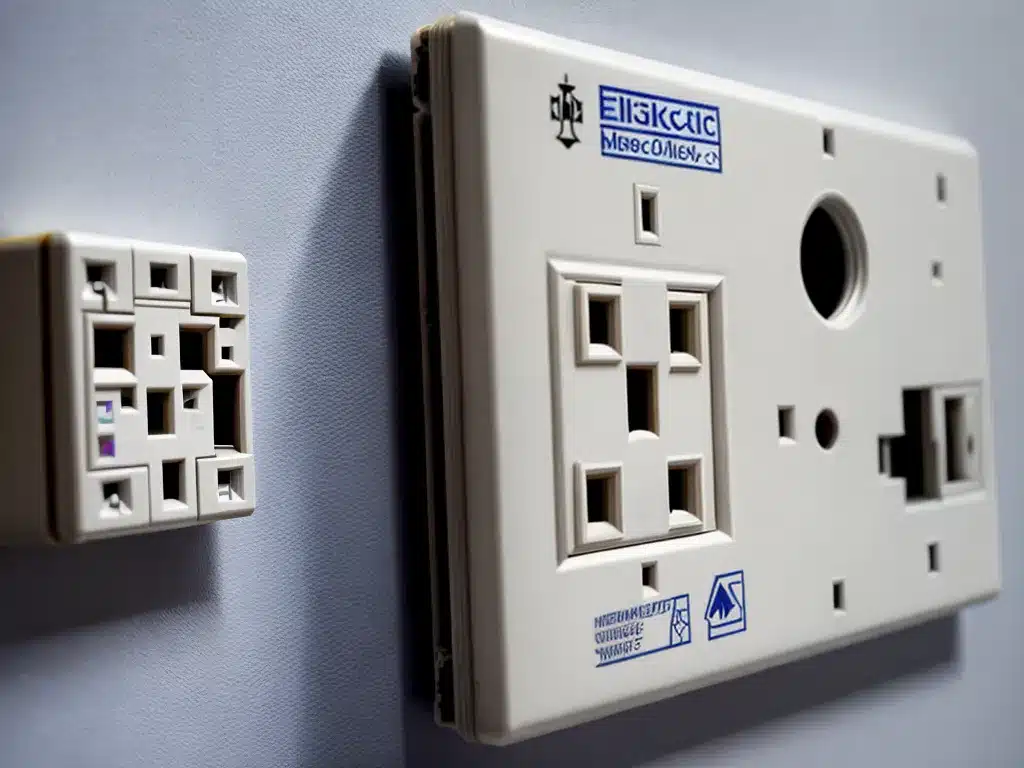 CE Marks Really Indicate Electrical Socket Safety?”” />
CE Marks Really Indicate Electrical Socket Safety?”” />
As an avid DIYer, I often find myself wondering about the safety certifications on the products I buy. Specifically, I see the CE mark on many electrical products like sockets and wonder – does the CE mark really guarantee these products are safe to use?
After doing some research, I’ve learned quite a bit about what the CE marking does and does not mean when it comes to verifying the safety of electrical sockets and other products. Here’s an in-depth look at what I discovered.
What is the CE Mark?
The CE marking is a certification mark placed on products sold in the European Economic Area (EEA). It indicates that the product meets the health, safety, and environmental protection requirements laid out in EEA directives.
Some key facts about the CE mark:
- It covers many product categories including electrical products, toys, medical devices, and more
- CE stands for Conformité Européenne which means “European Conformity” in French
- It is mandatory for products covered by EEA directives to carry the CE mark if sold in the EEA
- Manufacturers self-declare that their products meet CE requirements
- Products must comply with all applicable directives to bear the CE mark
So in summary, the CE mark shows that a product meets certain regulatory requirements for that type of product.
CE Testing Process for Electrical Sockets
For an electrical socket to receive the CE mark, it must meet all the safety, health, and environmental requirements in the following EEA directives:
- The Low Voltage Directive (LVD) which covers electrical equipment operating between 50-1000V AC and 75-1500V DC
- The Electromagnetic Compatibility (EMC) Directive which governs electromagnetic emissions and immunity
- The Restriction of Hazardous Substances (RoHS) Directive which limits certain hazardous materials
The socket must go through the following steps to receive the CE mark:
- Design – the socket is designed to meet requirements in the directives
- Testing – sample sockets undergo EMC emissions, immunity, electrical safety testing
- Declaration of Conformity – the manufacturer declares the product’s compliance
- CE Marking – the CE mark is affixed to the product and packaging
The manufacturer has responsibility for the entire process and self-declares conformity.
Independent safety testing bodies
While CE marking is self-declared, manufacturers can choose to have their products tested by an independent Notified Body. These organizations are designated by EEA member states to perform directive conformity assessments.
Common electrical safety testing bodies include:
- Intertek
- DEKRA
- UL
- TÜV SÜD
Having an independent assessment can increase credibility but is not mandatory for the CE mark.
What CE Marking Doesn’t Cover for Electrical Sockets
While the CE mark provides some degree of safety assurance, there are some important limitations:
- It does not guarantee complete safety – only conformity to directives
- It does not cover socket installation – improper installation can still be unsafe
- It does not verify manufacturing quality – substandard units could pass testing
- Counterfeit CE marks may be fraudulently affixed by some manufacturers
So the CE mark shows a basic regulatory compliance but does not provide an absolute guarantee of safety for every individual socket. Proper installation and choosing reputable brands still matters.
Additional Socket Certification Marks
Since the CE mark has limitations, sockets may carry additional safety certification marks to provide further assurance:
- UKCA – UK Conformity Assessed Mark for Great Britain
- GS Mark – German Safety Certification for tested safety
- EAC – Eurasian Conformity Mark for Russia and other countries
These marks indicate that extra steps were taken beyond CE requirements to verify safety through additional testing.
Real-World Electrical Safety Tips
While certification marks provide guidance, real-world electrical safety comes down to proper socket selection, installation, and usage:
- Choose sockets from reputable established brands who value quality
- Use sockets rated for the correct voltage for your electrical system
- Hire a licensed electrician for professional installation
- Visually inspect sockets periodically for damage/wear
- Don’t overload sockets above their rated amperage
- Use socket testers to validate correct wiring
- Check that sockets are well-seated in wall boxes with no gaps
Following these common sense precautions is important, even when using CE marked sockets for maximum safety.
Conclusion
In summary, while the CE mark provides a baseline level of electrical socket safety assurance, it does not guarantee complete protection by itself. Following directives, hiring certified testing bodies, choosing quality brands, proper installation, inspection and usage habits are equally if not more important for avoiding hazards. So CE marking alone is not enough – though when combined with other precautions, it can be a helpful piece of the overall safety puzzle.
